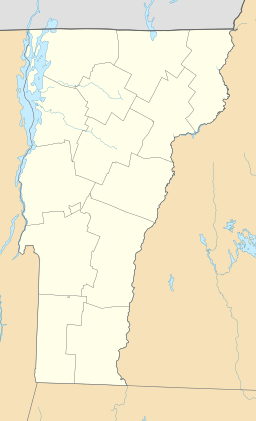Echo Lake (Charleston, Vermont) facts for kids
Quick facts for kids Echo Lake |
|
|---|---|
| Location | Charleston, Vermont, United States |
| Coordinates | 44°51′40″N 71°59′40″W / 44.86111°N 71.99444°W |
| Primary outflows | Clyde River |
| Max. length | 1.5 mi (2.4 km) |
| Max. width | 0.75 mi (1.21 km) |
| Surface area | 530 acres (2.1 km2) |
| Max. depth | 129 ft (39 m) |
Echo Lake is a beautiful freshwater lake. It is found in the town of Charleston. This area is part of Orleans County, Vermont. It is also known as the Northeast Kingdom.
Echo Lake is special because it is very deep and cold. It is also an oligotrophic lake. This means its water is very clean and clear. It has very few nutrients. Another nearby lake, Lake Seymour, is also like this.
The first person to map Vermont was named Whitelaw. He gave the lake its name, Echo Pond. He noticed that any sound made near the lake would bounce around. This created many echoes.
About Echo Lake
Echo Lake covers about 530 acres (2.1 km2) of water. It is about 1.5 miles (2.4 km) long. At its widest point, it is 0.75 miles (1.21 km) across. The deepest part of the lake is 129 feet (39 m) deep.
Water Flow
Water flows into Echo Lake from Lake Seymour. From Echo Lake, the water flows into the Clyde River. The Clyde River then leads to Lake Memphremagog. Eventually, this water reaches Canada's St. Lawrence River.
The Dam
There is a dam on Echo Lake. It helps to make electricity using water power. This is called hydroelectric power. The dam was finished in 1922. It is owned by a company called Citizens Utilities.
The dam is made of concrete. It is 16 feet (4.9 m) tall and 120 feet (37 m) wide. It can hold a lot of water. The dam was rebuilt in 1984.
What Lives in Echo Lake?
Echo Lake is a great place for coldwater fish. You can find many types of fish here. These include rainbow trout and lake trout. Yellow perch and smallmouth bass also live in the lake. Another fish called burbot is found here too.
You might also see other animals around the lake. Crayfish live in the water. Storks and seagulls fly overhead. Cattails are tall plants that grow along the lake's edges. The lake's temperature changes with the seasons.



